Drone Commercial Thermal Roof Inspections
Drone thermal commercial roof inspections offer roofing companies, insurance adjusters, and property managers a powerful tool for identifying hidden problems, such as water intrusion and insulation issues, by capturing temperature variations across the roof.
This method allows for quick, safe leak protection inspections, providing actionable insights that empower roofing companies, insurance adjusters, and property managers with actionable data.
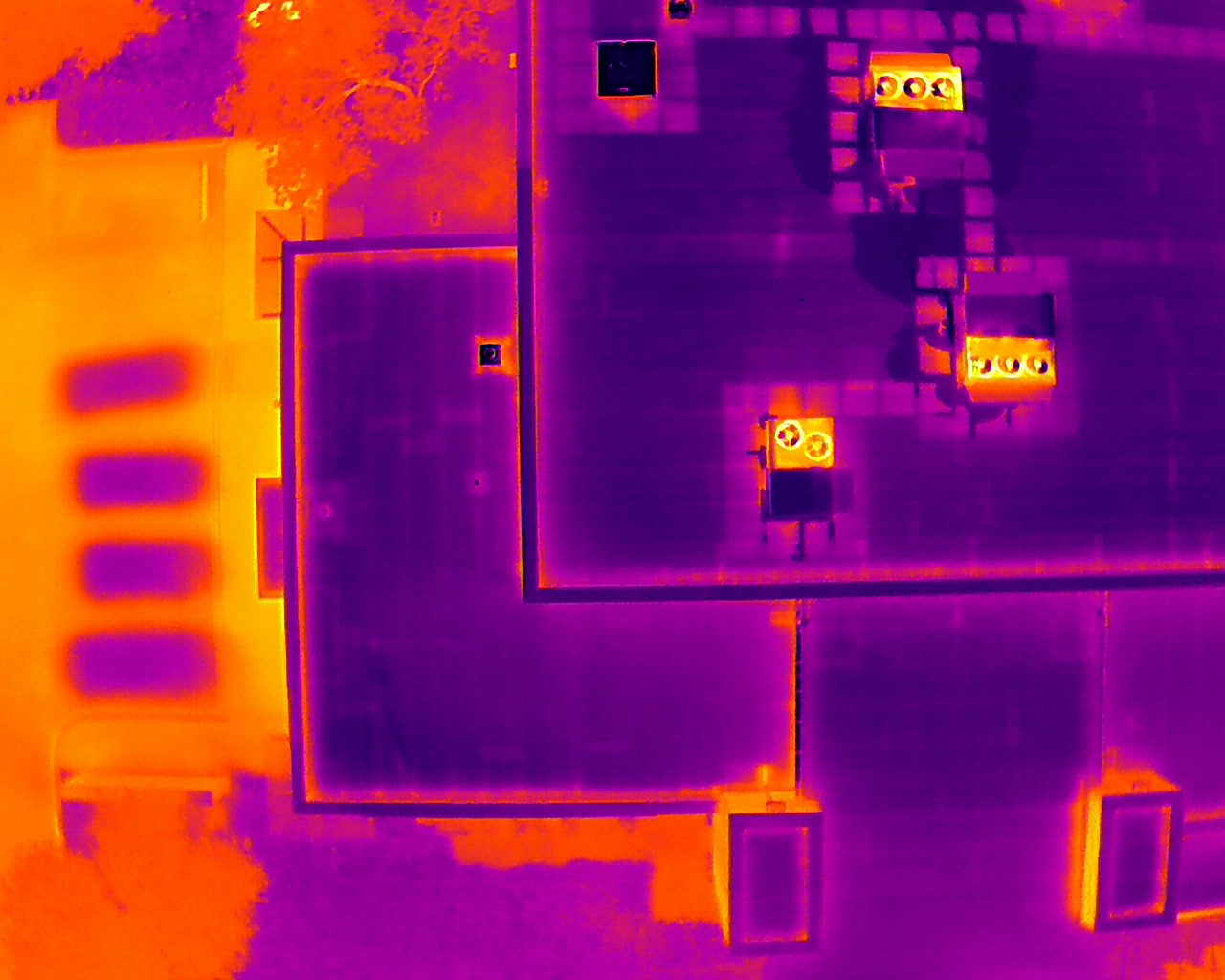
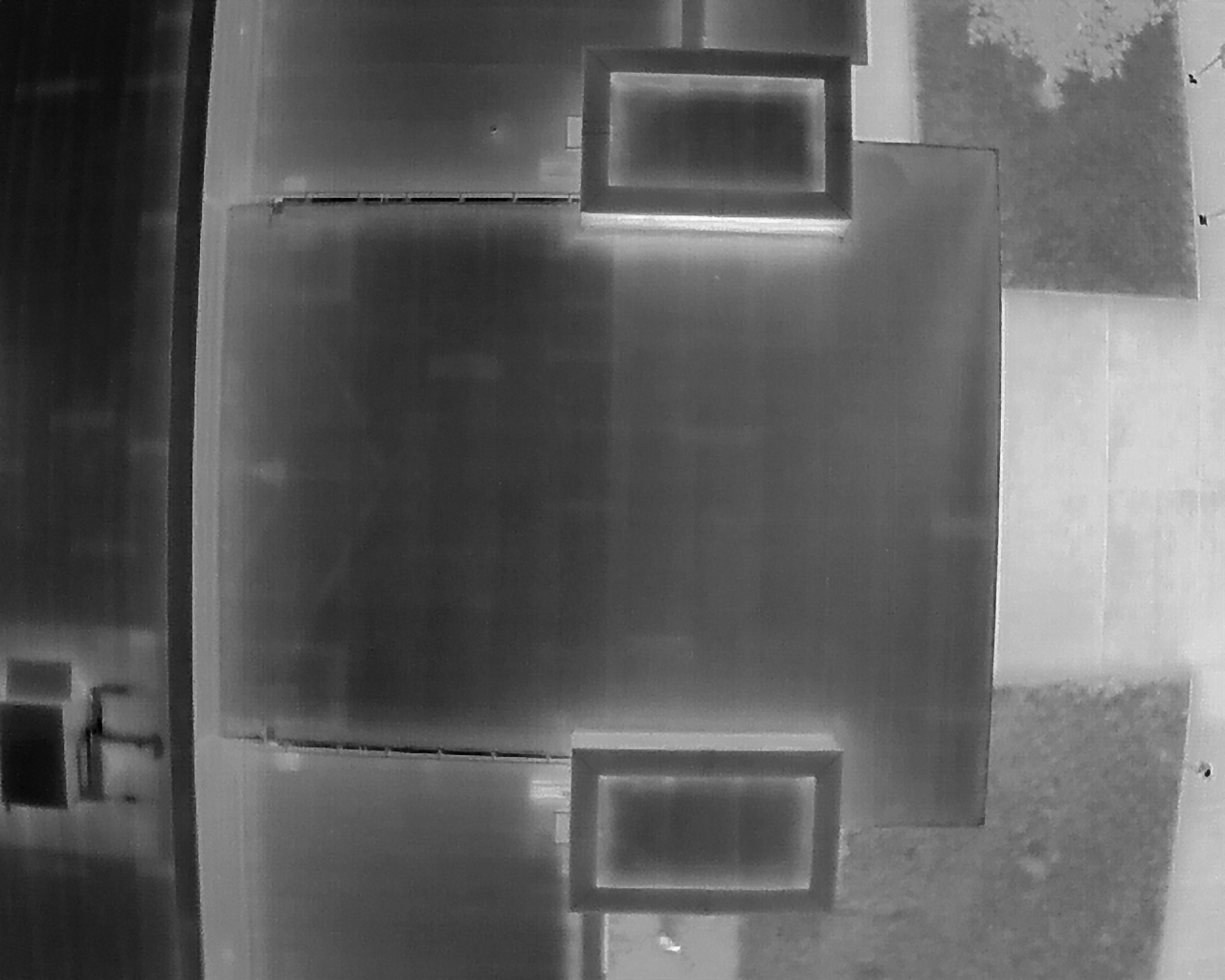
Infrared commercial roof inspection technology is particularly useful in assessing the condition of existing roofs and ensuring new installations meet quality standards for leak protection.
Thermal imaging technology can distinguish roofing services by enhancing diagnostic accuracy and informing data-driven decisions. This streamlined approach leads to more efficient project management.
While infrared imaging can detect anomalies in various types of roof structures, the primary use case is with commercial flat/low-sloped roofs (TPO, EPDM, etc.).
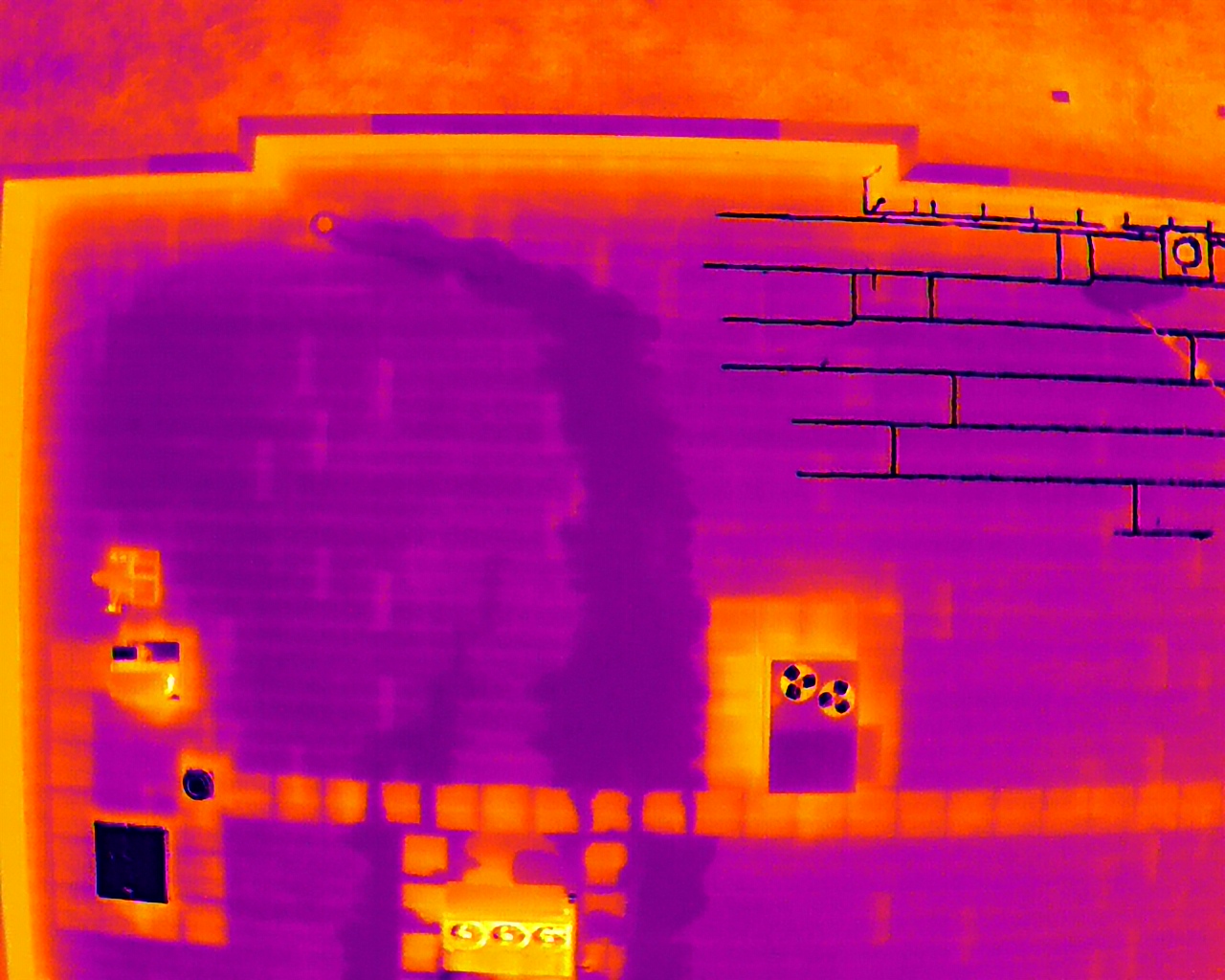
How Drone Thermal Roof Inspections Work
Drone thermal roof inspections are conducted by using an aerial infrared sensor to capture thermal anomalies indicative of moisture intrusion.
These inspections should be done at night after the roof structure has cooled off. Since water has a high specific heat, it takes longer to warm up and longer to cool down than the surrounding roof materials.
So, when performed at the correct time, areas of moisture intrusion will present themselves as noticeable temperature variations on a thermogram (referred to as the ∆T). When these inspections are done at night, the water will appear warmer than the surrounding roof.
With radiometric data (which is what we can produce), it is possible to measure exact temperatures from the thermal image, but for roofing applications, it is typically sufficient to simply observe temperature variations to pinpoint problem areas without performing an exact temperature analysis.
The Benefits of Infrared Commercial Roof Inspections
Thermal flat roof inspections can benefit property owners/managers, insurance professionals, and roofing companies.
Property Owners/Managers
Enhance Roof Longevity
Our thermography services are key to ensuring the longevity of your roofing system. By utilizing advanced thermal imaging technology, we can detect issues that are invisible to the naked eye during a conventional roof inspection, such as moisture ingress that can deteriorate the underlying insulation and wooden roof structure.
Early detection and remediation of these problems extend the life of your roof, safeguarding your investment over the long term. For property management companies and professionals, the roof is one of the most important considerations regarding overall structural integrity. For this reason, a proactive approach to roof management is critical.
Prevent Costly Repairs
Routine infrared roof inspections can save you a substantial amount of money in potential repair costs. Our services identify minor moisture intrusion issues before they escalate into major problems. This helps prevent the need for expensive repairs or complete roof replacement should the problem go undetected.
Addressing problems early on is cost-effective and ensures that your roof continues performing its critical protective functions without interruption.
A periodic aerial infrared roof inspection is a cost-effective way to monitor one of your property’s most critical components.
Enhance Energy Efficiency
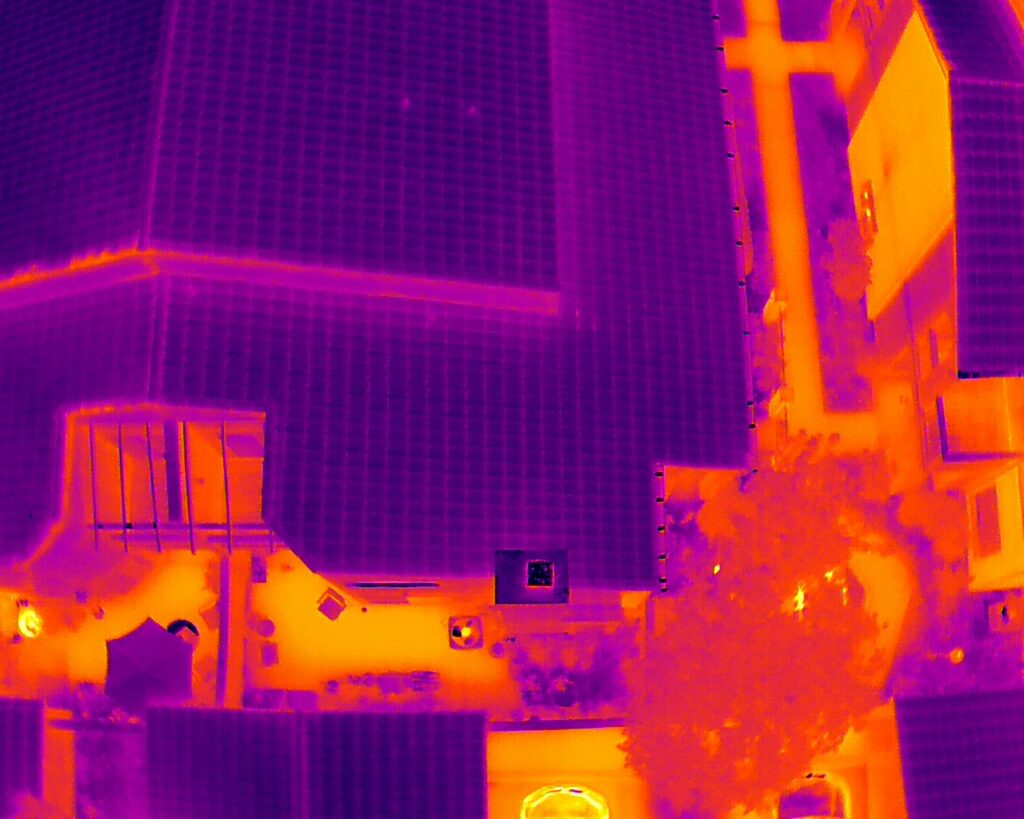
A well-insulated and defect-free roof is crucial for maintaining the energy efficiency of your building. Thermal irregularities, such as insulation gaps and moisture-damaged insulation, can increase heating and cooling costs. Furthermore, moisture penetration can lead to mold issues, a major health hazard for property tenants/residents.
Our thermal roof inspection services can help pinpoint these issues, allowing for targeted improvements that bolster your roof’s insulating properties and reduce energy expenses.
Insurance Professionals
Facilitate the Insurance Claims Process
Thermal commercial roof inspections are a great tool for insurance adjusters. The images captured during these inspections provide meaningful preliminary data on the condition of a flat roof structure. Significant information can be gleaned on the status of a roof without setting foot on the roof itself.
Aerial thermal imaging reveals damage to a flat roof’s wooden foundation and underlying insulation. This makes it an invaluable tool for insurance adjusters to leverage when assessing the extent of a roof’s damage.
Roofing Companies
Direct Roof Repair Projects
The data captured in a thermal drone roof inspection can help roofing professionals better direct maintenance efforts on a project. Project managers can better plan for a flat roof repair/replacement if the condition of the plywood and underlying insulation is assessed via thermal imaging before even setting foot on site.
Don’t waste time and money inspecting a flat roof for moisture damage the old-fashioned way. Instead, utilize the latest in drone infrared technology to make your process safer and more efficient.
Quality Assurance
A new flat roof is only as good as its moisture-sealing capability. Infrared commercial roof inspections can be beneficial in the quality assurance process. A thermal drone roof inspection reveals whether the roof is sealed properly after an installation or repair.
If water penetrates a new roof because it was installed poorly, it’s best to diagnose the mishap as early as possible to take corrective action, and aerial infrared imaging is the best way to do so. It is significantly more cost-effective, safe, and efficient than traditional leak check methods.
Aerial Infrared Roof Inspections — The End Product
There are two different products you can request depending on the details of the project.
Thermal Roof Inspection Report
First, you can receive a comprehensive roof inspection report highlighting thermal anomalies indicating leaks and other potential issues with the roof.
Depending on the scope of the inspection, we can provide accurate temperature measurements of any observed thermal anomalies. This provides better insight into the extent of the damage and the appropriate corrective action. We then use our knowledge of thermography to interpret the radiometric data captured during the inspection to provide our clients with a professional analysis of the data.
Below is an example of a roof inspection report generated from a thermal inspection of a portion of a flat roof.
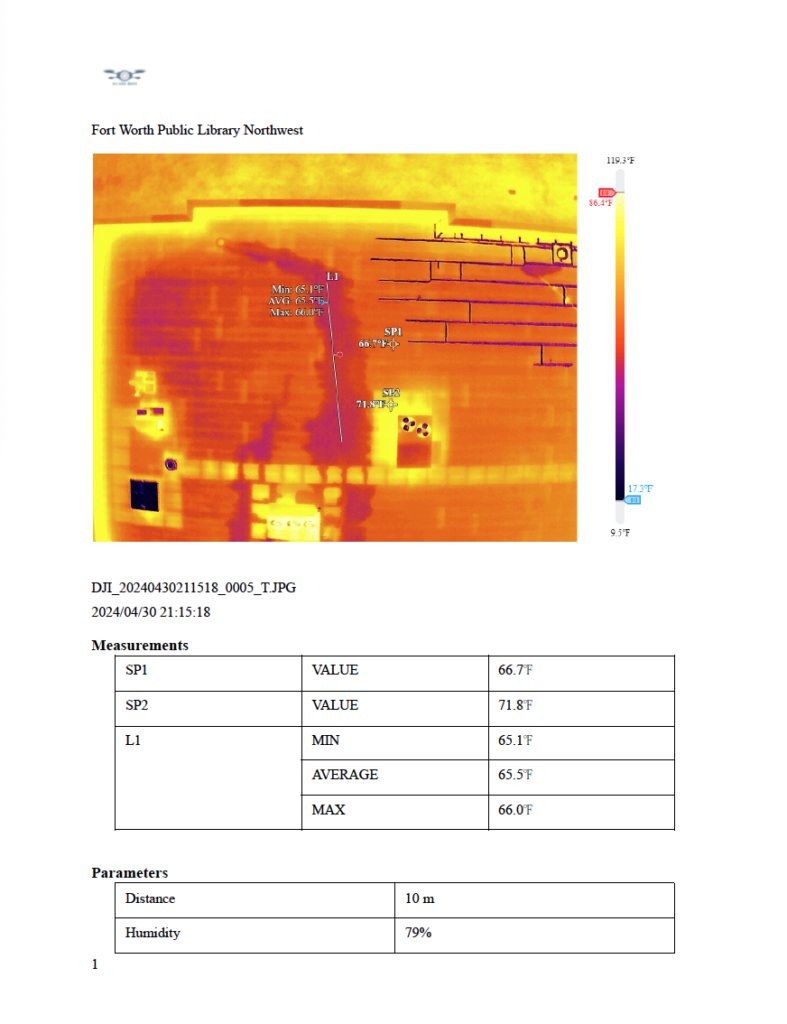
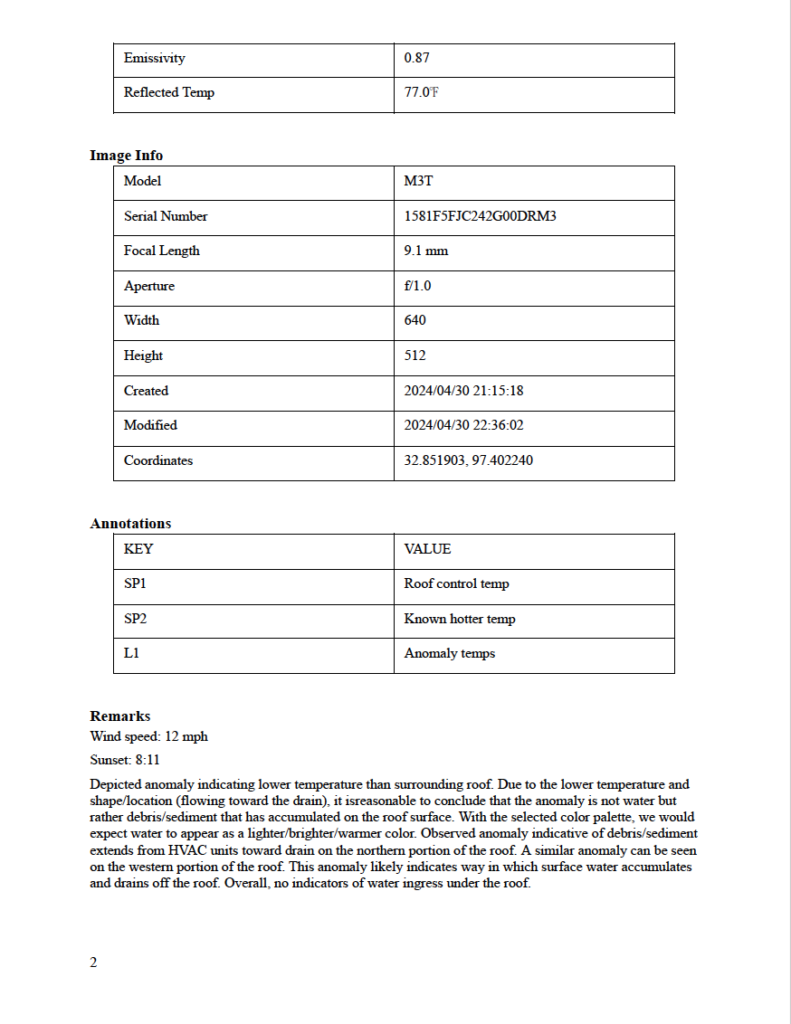
2D Thermal Roof Map
If a project warrants it or if requested by our clients, we can generate a 2D thermal map of the roof using state-of-the-art cloud-based software. Simply put, we capture a significant number of infrared photos and use the software to stitch them together, creating a product that resembles Google Maps but with the roof’s thermal data overlaid onto it.
This product allows our clients to assess the thermal status of roof structures more cohesively, which makes it ideal for large projects. At a glance, all members of your team can assess the condition of the roof.
Our clients will receive a link to the map along with photos taken of the project on our cloud-based software. Clients can then interact with the product, make annotations, and collaborate with their team more effectively.

We strictly adhere to the standards set forth in ASTM C1153, so you can rest assured that our data is as accurate as possible.
Interested in a quote for your project? Click the button below to drop us a line.
Be sure to check out how aerial thermography can also be used for photovoltaic panel inspections.
